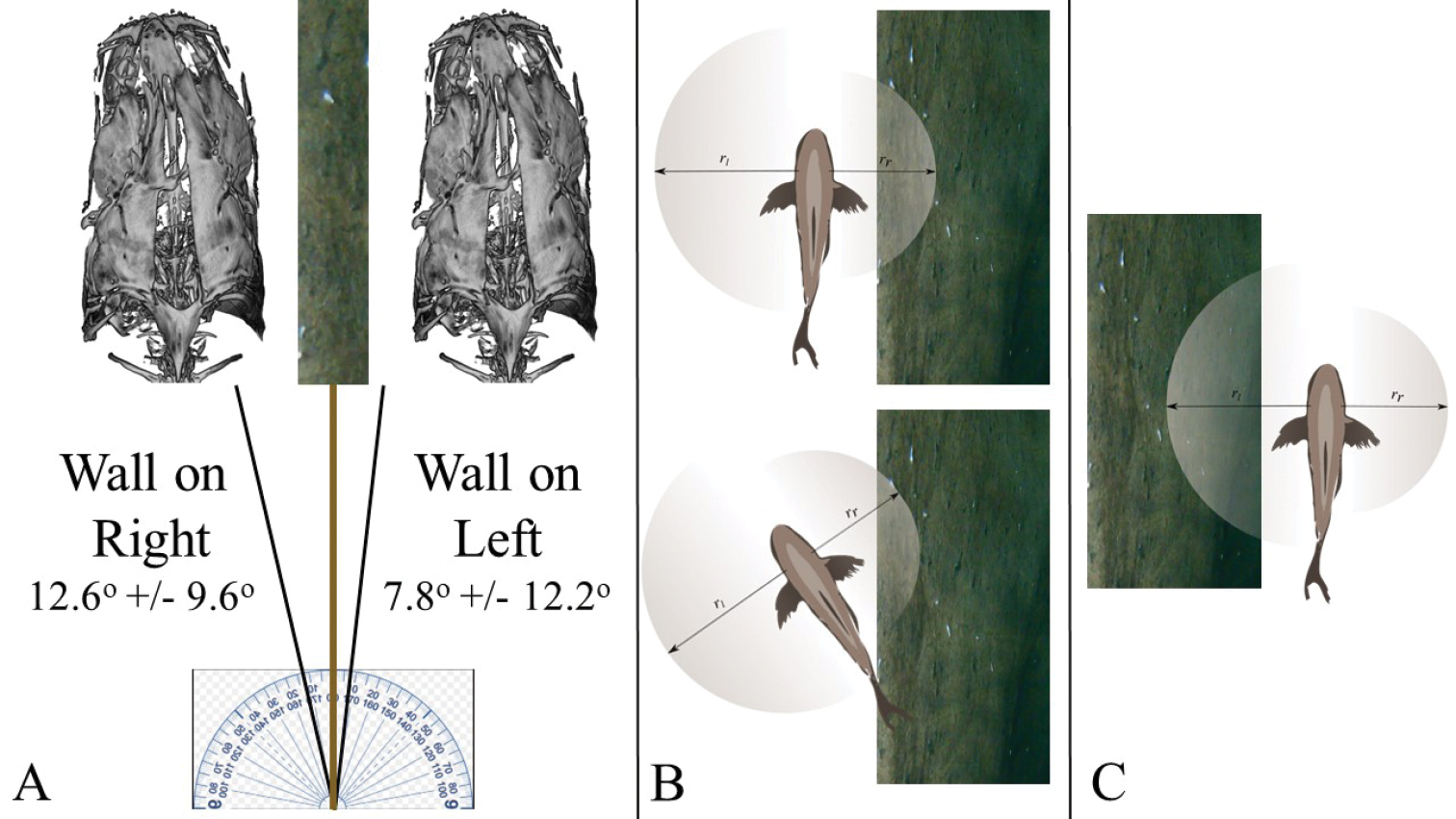
|
||
|
Hypothesis for asymmetrical dorsoventral axis swimming by a wall A cavefish have a leftward-biased dorso-cranial bend, where the concave side of the head is towards their left side (Powers et al. 2017). Likewise, Pachón cavefish show a positive correlation of VAB with the number of neuromasts on their left side but not on their right (Fernandes et al. 2018). Results from this study show that when cavefish swim with their left side of the body toward a wall (grey rectangle with white mysid shrimps), the angle of inclination is significantly less than when their right side is towards a wall. Average angles used by Tinaja fish and Tinaja skulls are portrayed in the drawing. By leaning their underside towards the wall (B) cavefish receptive fields (grey semicircles with different radii: Rr=right and Rl=left) from both sides of the body may be combined to increase surface area scanned. Espinasa et al. (2023a) showed that receptive fields on either side of the body in cavefish are asymmetric. It is hypothesized that when cavefish swim with their smaller receptive field (B) towards a wall, increasing the dorsoventral axis angle provides a proportionally higher scanned surface area than when cavefish swim with their larger receptive field (C) towards the wall. In this case, it is expected that a larger angle will be used when swimming with their right side of the body towards the wall than when their left side is towards the wall. |